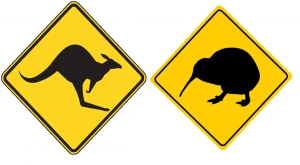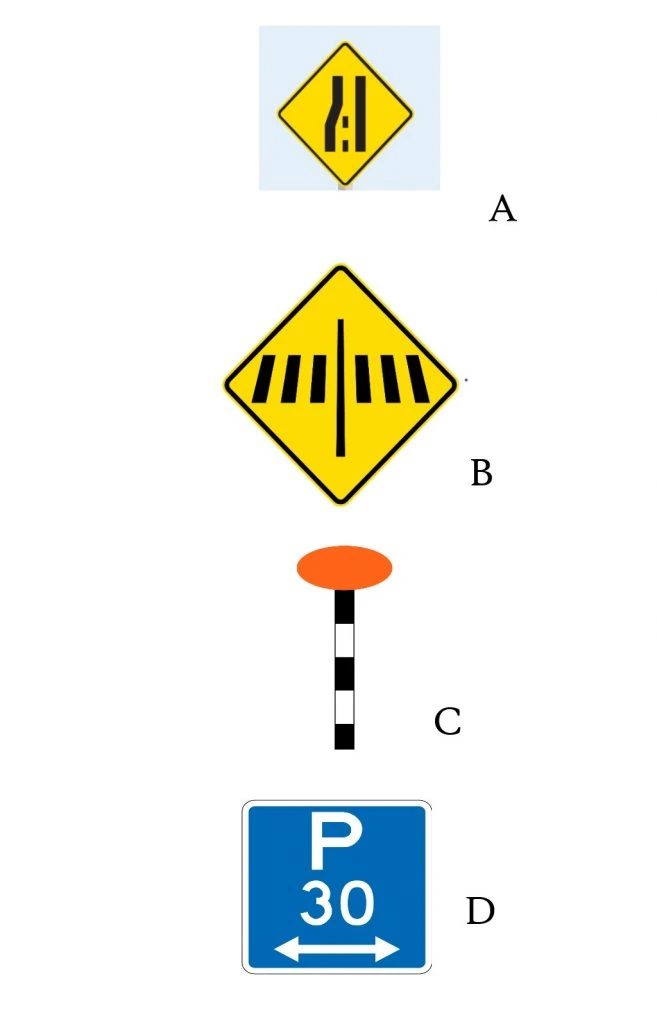New South Wales and New Zealand: Spot The Difference

Thinking of heading across the ditch to New Zealand this winter for a spot of skiing or sightseeing, picking up a rental car so you can travel according to your own fancies? If you’re heading over from New South Wales, you’ll find that although a lot of things are the same when driving in New Zealand compared with back home, there are quite a few sneaky little differences that might trip you up. Most of the road rules and road signs will be familiar, but some aren’t and some are nonexistent. Here’s a handful of some differences you might notice:
Even in the middle of what passes for a city, there’s way less congestion. In the busiest parts of town during rush hour, you’ll get some congestion, but nothing like you’ll find in the middle of Sydney.
People don’t honk the horns half as much. OK, someone might honk if the driver at the front of the queue is naughtily on their phone or daydreaming and doesn’t notice that the light has turned green, but drivers seem more patient in, say, Christchurch than they are in Sydney and will jump on the horn a lot slower.
You don’t get handy “merge ahead” signs. Instead, you get Sign A in the diagram below. The idea is to “merge like a zip”, left-right-left-right, etc.

Pedestrian crossing (zebra crossing) signage is different. The familiar sign with the pair of walking legs isn’t on the zebra crossing itself, and you don’t get the zigzag road markings leading up to the crossing. Instead, you get the warning sign (Sign B), with an orange dot on a stripy pole on the crossing (Sign C).
Pedestrian refuge islands aren’t signed. This means that at any time a centre island divides two lanes of traffic, there could be a lurking pedestrian hoping to cross. Keep your eyes open (and the pedestrian will be doing the same). Refuge islands with designated cut-downs for pedestrians are common near roundabouts.
Parking limits are in minutes, not hours. If you got all excited about a sign saying “P5” or “P15”, believing that you’d be able to park there for 5 or 15 hours, I’m sorry to disappoint you. You’ve only got 5 or 15 minutes. If you’re lucky, you can find signs giving you 90, 120, 180 or 240 minutes of parking (if you look hard enough), meaning 1½ hours, 2 hours, 3 hours and 4 hours, respectively. Sign D is a typical example.
If you’re in an urban area, the speed limit is probably 50 km/h. There aren’t as many 60 km/h sections. Local traffic areas don’t exist, so assume that it’s 50 km/h unless told otherwise.
Even on the motorway, you won’t get to go 110 km/h legally. At the time of writing, the Kiwi Powers That Be are discussing the introduction of 110 km/h sections on some main motorways. However, this is still in the discussion stage, so if you head over this winter, you’ll have to keep your speed to a maximum of 100 km/h when in rural areas.
School zones don’t have the times handily displayed. If the signs are flashing, the reduced speed limit (either 30 or 40 km/h) applies; if they’re not flashing, the usual speed limit (usually 50 km/h) applies.
Speed cameras are sneaky. Permanent ones – and there are some – don’t have warning signage. There have been calls from lobby groups to introduce signs warning you that there are permanent speed cameras in position, but there aren’t any yet. You may, however, see some signs warning you about red light cameras. NZTA has taken to calling both speed cameras and red light cameras by the twee name of “safety cameras” but the majority of Kiwi think this is a cringeworthy attempt to not call a spade a ruddy spade. The NZTA Journey Planner website has a map showing you where the mobile ones are, so check this when you plan your journey (it’s a good idea to check it even if your right foot isn’t on the heavy side, as it will also tell you if roads have been closed or if there are major roadworks underway).
Witches’ hats everywhere. The roading contractors just LOVE witches’ hats and will put up heaps of them even weeks before the actual road works take place, and these will probably be the last thing they take away. They’ll also start appearing up to 1 km ahead of the road works (in rural areas). They’ll also put up insane numbers of the things. I have no idea what they’re thinking. Do they think that if there’s a car-sized gap in the middle of a long row of witches’ hats that I’m going to decide to cross the line? Incidentally, not many Kiwis will use the word “witches’ hat” but will call them a “road cone”. Near universities, you may spot some in unusual places, such as up trees.